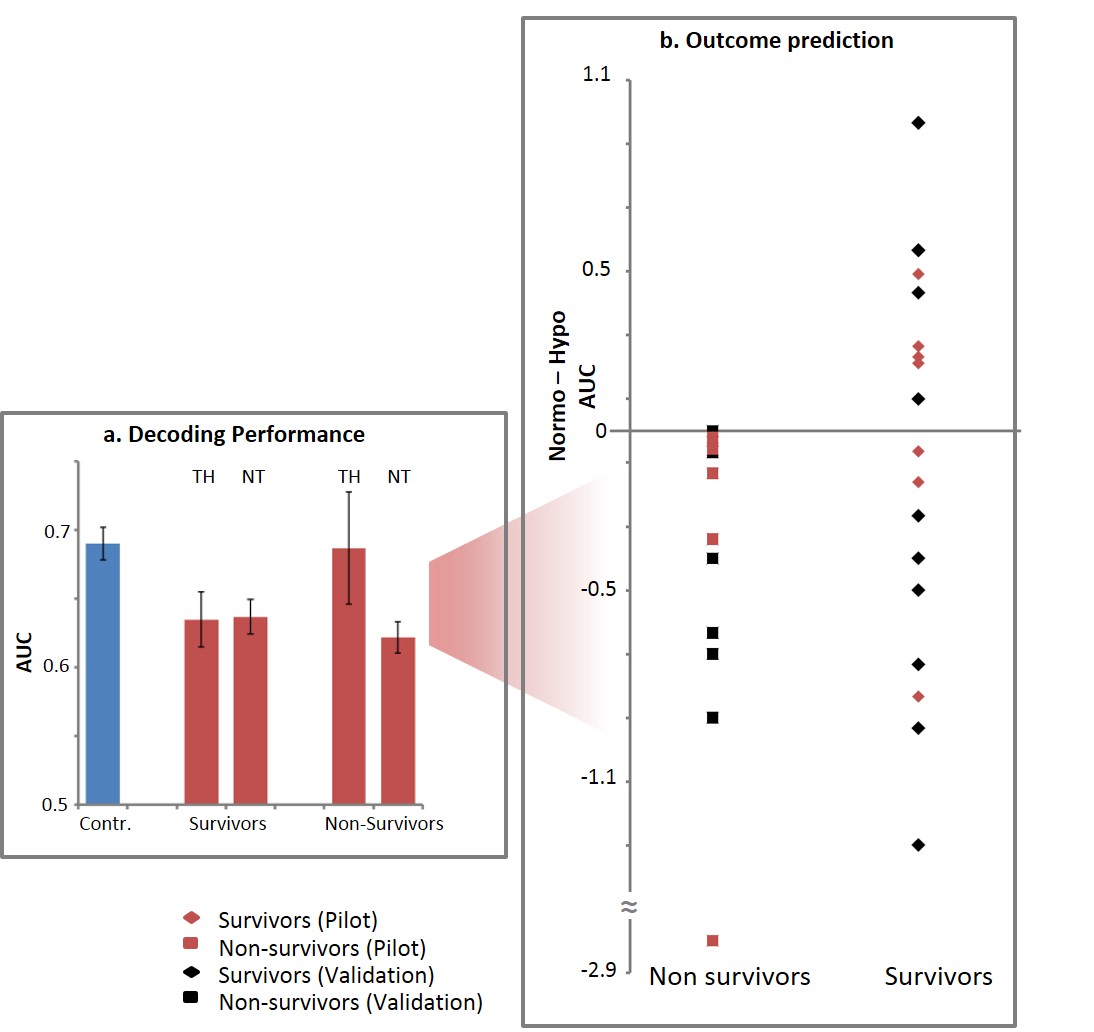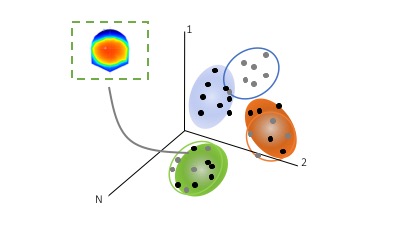Cognitive Computational Neuroscience
Research
- Basic neuroscience: extraction of environmental regularities
- Clinical applications: outcome prediction in coma patients
- Computational and machine learning applications
Clinical applications: outcome prediction in coma patients
In our day-to-day lives, we are constantly immersed in streams of sensory information. Stimuli from our environment, like for example sounds, very often do not occur in a random way, but follow statistical rules and repetitive patterns. Thanks to these rules we are able to form expectations about future events, before these occur. I am interested in studying the neural and computational mechanisms that allow us to detect violations of anticipated events, in relation to our levels of consciousness, attention, or complexity of the environment.
In particular, in previous work we have used multivariate EEG decoding techniques to show, that patients who are deeply unconscious can detect at a neural level, violations of simple rules and complex sound sequences.
 Tzovara et al., 2013, Brain, doi:10.1093/brain/aws264
Tzovara et al., 2013, Brain, doi:10.1093/brain/aws264
Representative publications:
-
Tzovara A, Rossetti AO, Spierer L, Grivel J, Murray MM, Oddo M, De Lucia M. (2013) Progression of auditory discrimination based on neural decoding predicts awakening from coma. Brain. 136(1):81-9.
-
Tzovara A, Simonin A, Oddo M, Rossetti AO, De Lucia M. (2015) Neural detection of complex sound sequences in the absence of consciousness. Brain 138(Pt 5):1160-6.
-
Chouiter L, Tzovara A, Dieguez S, Annoni JM, Magezi D, De Lucia M, Spierer L. (2015) Experience-based Auditory Predictions Modulate Brain Activity to Silence as Do Real Sounds. J Cogn Neurosci. 27(10):1968-80. *equal contribution.
-
Tzovara A, Rossetti AO, Juan E, Suys T, Viceic D, Rusca M, Oddo M, De Lucia M. (2016) Prediction of awakening from hypothermic post anoxic coma based on auditory discrimination. Ann Neurol. doi: 10.1002/ana.24622.
Computational and machine learning applications
Studying neural responses to environmental stimuli through electroencephalography (EEG), typically requires averaging hundrents or thousands of single-trial responses, and contrasting them at single electrode locations. During my PhD, I used multivariate techniques to model the distribution of single-trial EEG responses across the scalp, and extract topographic EEG responses in a data-driven way. This technique can be used to model data at the single-patient level, to decode decisions from EEG responses, or to test the role of temporal intervals in processing environmental stimuli.

Tzovara et al., 2012, Develop. Neuropsychology, doi: 110.1080/87565641.2011.636851
Reconstructing oscillatory activity from the hippocampus & amygdala using MEG
under construction
Modeling skin conductance & pupil responses
under construction
Representative publications
-
Tzovara A, Murray MM, Michel CM, De Lucia M. (2012) A tutorial review of electrical neuroimaging from group-average to single-trial event-related potentials. Developmental Neuropsychology. 37(6):518-44.
-
Tzovara A, Murray MM, Plomp G, Herzog MH, Michel CM, De Lucia M. (2012) Decoding stimulus-related information from single-trial EEG responses based on voltage topographies. Pattern Recognition. 45( 6): 2109–2122.
-
Tzovara A, Murray MM, Bourdaud N, Chavarriaga R, del R. Millán J, De Lucia M. (2012) The timing of exploratory decision-making revealed by single-trial topographic EEG analyses. Neuroimage. 60(4):1959-69.
-
De Lucia M, Tzovara A. (2015) Decoding auditory EEG responses in healthy and clinical populations: A comparative study. J Neurosci Methods. 250:106-13.